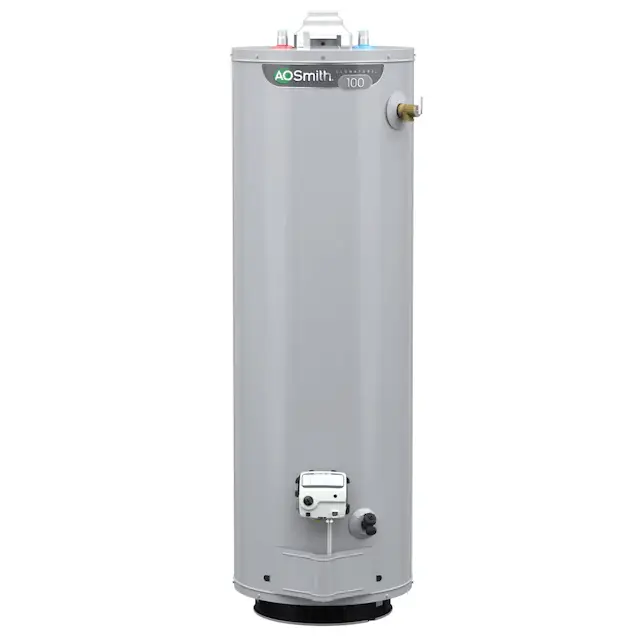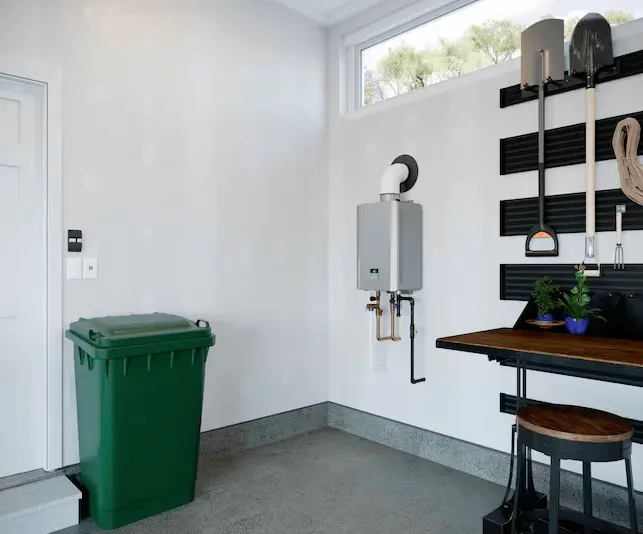

Many homeowners prefer gas hot water systems. They are more consistent than electric ones, which can experience temperature swings. But how does a gas hot water system work?
In short, it burns natural gas to heat a heat exchanger, which then heats the water, with a thermostat controlling the temperature.
So, is a gas system the right choice for your home? Let’s look at what it is, along with its pros and cons, so you can discuss it with your gas hot water installation service before deciding. Read on!
A gas hot water system is a setup where a gas burner heats up your water. The burner creates controlled flames, and then a heat exchanger transfers that heat to the water without direct contact.
These systems are designed to deliver hot water whenever you need it. They supply taps, showers, appliances, and fixtures. This makes daily activities like bathing, cooking, and cleaning more convenient.
Unlike electric hot water systems that use heating elements, gas-fired water heaters burn natural gas or propane to generate heat. Their steady flame heats water faster, giving you hot water quickly.

In general, there are two main types of gas hot water systems: storage tank and tankless systems.
Storage tank systems usually hold about 30 to 80 gallons of hot water. So you have a steady supply whenever you need it. In a gas storage hot water system, the heated water is kept in an insulated tank.
They’re ideal for larger homes with high hot water demand, as they can serve multiple fixtures at once without running out.
Tankless systems, or instant hot water systems, heat water only when you need it. This on-demand approach saves energy by avoiding standby heat loss.
They also save space and tend to last longer because they have fewer parts exposed to constant heat.
Here are the main steps showing how a gas hot water system works:

That’s how a gas hot water system works (especially for the ones with the storage tanks). For a tankless system, it’s way simpler:
You know what a gas hot water system is and how it works. So, before installing one, let’s look at its pros and cons:
These are the reasons that might encourage you to install a gas hot water system in your home:

These are the factors you should consider carefully before making the decision to install one:
Here are some key questions about the gas hot water system you should know:
Modern gas water heaters usually need electricity for ignition and controls. Older models with a standing pilot light don’t.
They run on a constant flame and work without power, as long as the pilot stays lit. Keep this in mind when planning for outages.
A gas water heater typically lasts 10 to 15 years. Regular check-ups and cleaning can help it last longer.
Its lifespan depends on how you use it, how it’s installed, and your water’s mineral content. Proper maintenance and quick repairs make a difference.
Gas hot water systems in Australia tend to be cheaper to operate. Natural gas costs less per unit of energy than electricity.
Although the upfront price of a gas system may be higher, the lower ongoing costs usually save you money in the long run.
A gas water heater with a standing pilot runs without electricity. The pilot stays lit with minimal gas. When hot water is needed, the gas valve opens and ignites the main burner. A thermocouple acts as a safety switch, allowing gas flow only if the pilot burns.
Gas hot water systems are a good choice for reliable, quick, and energy-efficient hot water. They use natural gas to heat water fast, so you get hot water whenever you need it.
Choosing the right system means considering your home’s needs and budget. Since you know how gas hot water systems work, you can make an informed decision that best suits your household.
We hope this information is helpful. Remember to contact a trusted gas maintenance service when needed to keep your system safe.


Fill the form below and we’ll get back ASAP!

MGP! Thank you for help, honest pricing and high quality work. Thank you to Joe for pricing and the boys involved for replacing my hot water tank and fixing my gas leak for a reasonable price. 5 star response, 5 star service and 5 star price.
Joe was great. Very professional and quick. Gas hot water heater needed replacing, he was honest and upfront about what our options were. System was sourced and replaced within a couple of hours.
Fantastic service very responsive Joe is highly recommended and works very clean and neat..... good job well done....very happy... will use again and again

At Melbourne Gas Plumber, we're here to handle all your gas plumbing needs throughout Melbourne. With over 40 years of experience, we bring extensive local knowledge and expertise to every job.
QUICK LINKS
OPENING HOURS
Open 24/7
